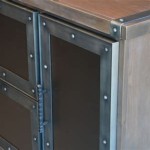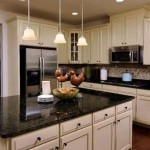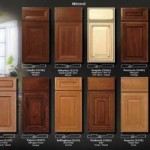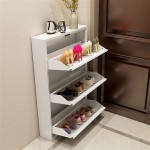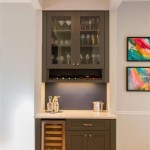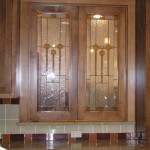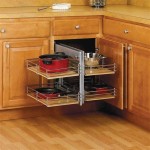Painting Melamine Cabinet Doors For A Professional Looking Home
Melamine cabinets, popular for their affordability and durability, often find their place in kitchens and bathrooms. While practical, their aesthetic appeal can sometimes be lackluster. Painting melamine cabinet doors offers a cost-effective way to upgrade the look of a home, injecting personality and style without undertaking a full-scale renovation. However, painting melamine is not as straightforward as painting wood. It requires careful preparation, specific materials, and meticulous application to achieve a professional and lasting finish.
The primary challenge lies in the melamine surface itself. Melamine is a thermosetting plastic resin bonded to a substrate, usually particleboard or MDF. Its smooth, non-porous surface resists paint adhesion, necessitating a multi-step process to ensure proper bonding and prevent peeling or chipping later on. Skipping steps or using inappropriate materials can lead to a disappointing and short-lived result. This article details the procedures and considerations necessary to successfully paint melamine cabinet doors, resulting in a professional and aesthetically pleasing outcome.
Preparing the Melamine Surface: The Foundation for Success
Proper surface preparation is arguably the most crucial step in painting melamine. Without it, even the highest quality paint will fail to adhere properly. This section outlines the necessary steps to create a receptive surface for the paint.
1. Cleaning: The initial step is thorough cleaning. Over time, cabinet doors accumulate grease, grime, and dust, which can interfere with adhesion. Use a degreasing cleaner, such as TSP (trisodium phosphate) substitute, or a specialized kitchen cleaner. Apply the cleaner with a clean cloth or sponge, scrubbing gently to remove all traces of dirt and grease. Rinse thoroughly with clean water and allow the doors to dry completely. It is important to ensure no residue remains, as this can compromise the paint's ability to bond with the melamine.
2. Light Sanding: While melamine is non-porous, light sanding creates a mechanical key for the primer to grip. Use fine-grit sandpaper (220-grit or higher) to lightly scuff the surface. The goal is not to remove the melamine finish, but to create a slightly textured surface. Sand in consistent, even strokes, avoiding heavy pressure. After sanding, use a tack cloth or damp cloth to remove all sanding dust. Dust particles left behind will create imperfections in the finished paint job.
3. Priming: Priming is essential for adhesion. Choose a high-quality adhesion-promoting primer specifically designed for use on slick surfaces like melamine, laminate, or plastic. These primers contain chemicals that create a strong bond between the melamine and the subsequent layers of paint. Apply the primer according to the manufacturer's instructions, using a brush, roller, or sprayer. Ensure even coverage, avoiding drips or runs. Allow the primer to dry completely, following the recommended drying time on the product label. A second coat of primer may be necessary for optimal adhesion, especially if the original melamine surface is very glossy.
4. Caulk (Optional): Before primining or painting, inspect the joints or any gaps around the door panels. Caulking can be used to fill these gaps and create a seamless look. Use a paintable caulk and apply it sparingly, smoothing it with a wet finger or a caulk smoothing tool. Allow the caulk to dry completely before proceeding with priming.
Selecting the Right Paint and Tools
The choice of paint and application tools significantly impacts the final result. Using the wrong type of paint can lead to peeling, chipping, or an uneven finish. Investing in quality tools ensures a smooth and professional application.
1. Paint Type: While oil-based paints offer durability, they are less environmentally friendly and require mineral spirits for cleanup. Water-based acrylic or latex paints are generally recommended for painting melamine. Choose a paint specifically formulated for cabinets or trim, as these paints are designed to withstand wear and tear. Consider using a self-leveling paint, which minimizes brush strokes and creates a smoother finish. Alternatively, a two-part epoxy paint may be used. They usually consist of a resin and a hardener, and is known for its exceptional durability and resistance to chemicals and scratches, making it an excellent choice for high-use cabinets. However, epoxy paints can be more challenging to work with due to their shorter working time and the need for precise mixing.
2. Paint Sheen: The paint sheen affects the appearance and durability of the finish. Semi-gloss or gloss sheens are generally recommended for kitchen and bathroom cabinets, as they are easier to clean and more resistant to moisture. However, higher gloss sheens can highlight imperfections in the surface. Satin or eggshell sheens offer a more subtle look but may be less durable and harder to clean. Consider the desired aesthetic and the level of wear and tear the cabinets will endure when selecting a sheen.
3. Application Tools: The choice of application tools depends on the desired finish and personal preference. A high-density foam roller is ideal for achieving a smooth, even finish on flat surfaces. A high-quality angled brush is necessary for painting edges, corners, and detailed areas. If using a sprayer, choose a fine-finish nozzle and ensure the paint is properly thinned according to the manufacturer's instructions. Investing in quality brushes and rollers will result in a smoother, more professional finish. For sprayers, always wear a respirator to prevent inhalation of paint fumes.
4. Safety Equipment: Always wear appropriate safety equipment when painting, including eye protection, gloves, and a respirator. Ensure adequate ventilation in the work area to prevent the build-up of paint fumes. Dispose of paint and cleaning materials properly, following local regulations.
Applying the Paint for a Professional Finish
The application of the paint is where technique and patience come into play. Multiple thin coats are preferable to one thick coat, which can lead to drips, runs, and uneven drying. This section details the best practices for achieving a smooth, durable, and professional-looking paint finish.
1. Painting Technique: Apply the paint in thin, even coats, using smooth, overlapping strokes. Avoid applying too much pressure, which can cause the paint to sag or run. If using a roller, work in small sections, rolling the paint on in a "W" or "N" pattern and then smoothing it out with light, even strokes. If using a brush, apply the paint in the direction of the grain (if applicable) and feather the edges to blend them seamlessly. Pay particular attention to edges and corners, ensuring they are fully coated without any paint build-up. After the first coat has dried completely (as per the manufacturer's instructions), lightly sand any imperfections with fine-grit sandpaper (320-grit or higher) and remove the dust with a tack cloth.
2. Curing Time: Allow each coat of paint to dry completely before applying the next. Rushing the drying process can lead to an uneven finish and poor adhesion. Follow the manufacturer's recommended drying times, which may vary depending on the temperature and humidity. After the final coat of paint has been applied, allow the cabinets to cure fully before reinstalling them. Curing time can range from several days to a week, depending on the type of paint used. Full curing ensures the paint is fully hardened and resistant to scratches and chips.
3. Multiple Coats: Achieving a professional finish often requires multiple coats of paint. Typically 2-3 coats of paint provide the best coverage and durability. Each coat should be applied thinly and evenly, allowing ample drying time between coats. Lightly sanding between coats can help to remove any imperfections and create a smoother surface for the subsequent coat. Remember to remove all sanding dust before applying the next coat of paint.
4. Reassembly and Hardware: After the paint has fully cured, carefully reassemble the cabinet doors, reattaching the hinges and hardware. Consider replacing old or outdated hardware to further enhance the updated look of the cabinets. Inspect the doors for any imperfections or touch-up spots. Use a small brush to carefully touch up any areas that need attention. Clean the cabinet doors with a mild cleaner and a soft cloth to remove any dust or fingerprints. Regular cleaning and maintenance will help to prolong the life of the painted finish.
By following these steps and using quality materials, it's possible to achieve a professional-looking paint finish on melamine cabinet doors. This transformation can significantly enhance the overall aesthetic of the home, providing a cost-effective alternative to replacing the entire cabinetry.

5 Tips For Painting Melamine Cabinets Real Milk Paint Co

Painting Melamine Kitchen Cabinets The Decorologist

How To Paint Melamine Cabinets My Uncommon Slice Of Suburbia

5 Tips For Painting Melamine Cabinets Real Milk Paint Co

Painting Melamine Cabinets Home Painters Toronto

5 Tips For Painting Melamine Cabinets Real Milk Paint Co

How To Paint Laminate Kitchen Cabinets Perfect Finish Tips

Beginner S Guide To Kitchen Cabinet Painting

How To Paint Kitchen Cabinets Without Sanding Or Priming

How To Paint Laminate Cabinets Without Sanding The Palette Muse
Related Posts

